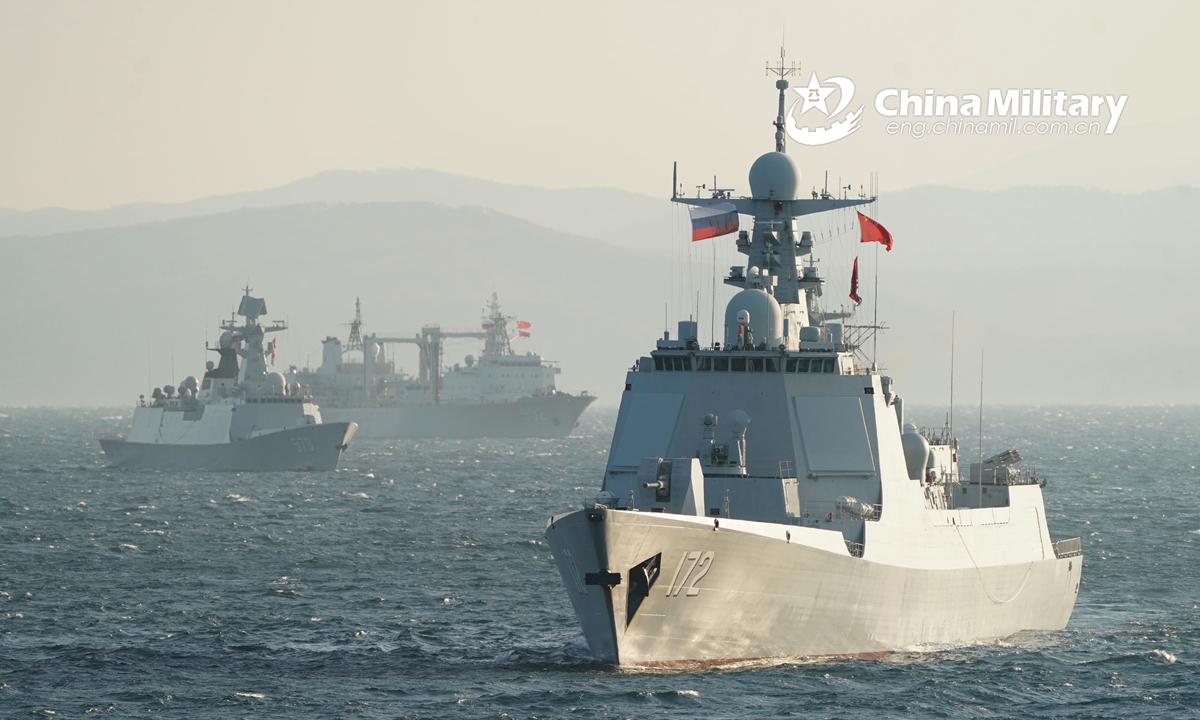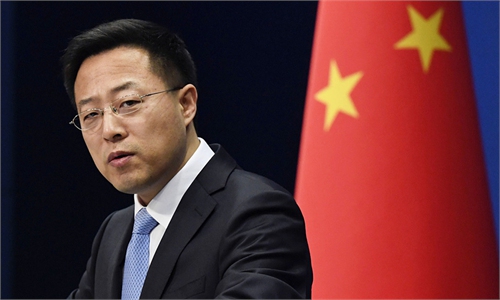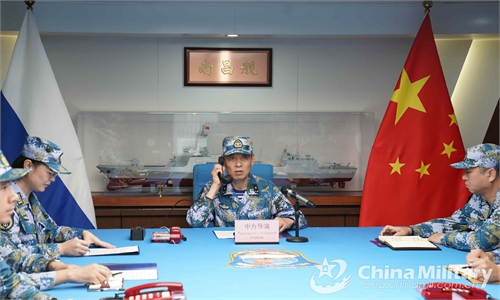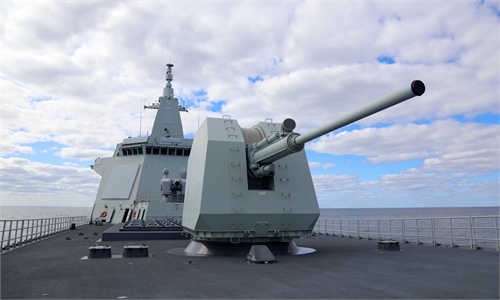Taiwan Straits is no Tsugaru Strait; US warship passage will never be legalized: Global Times editorial

Chinese and Russian warships transit simulated mined sea area during the naval exercise Joint Sea-2021 on the morning of October 15. The China-Russia joint naval exercise kicked off in waters near Russia's Peter the Great Bay on the afternoon of October 14, which focused on such training subjects as communications, mine countermeasures, air defense, live-fire shooting at maritime targets, joint maneuvering and joint anti-submarine missions.Photo:Xinhua
During the Chinese Foreign Ministry's routine press conference on Tuesday, Western media provocatively asked that since Chinese and Russian warships on Monday passed through the Tsugaru Strait between two Japanese islands, how is it different from foreign warships sailing through the Taiwan Straits? Chinese Foreign Ministry spokesperson made a solemn response on the spot.US politicians and military leaders have already made lame arguments with perverted logic. But Western media reporters are also pretending to be ignorant, comparing the completely different situations between the Tsugaru Strait and the Taiwan Straits. They are trying to provide public opinion support for the US' roping in allied warships to show off force in the Taiwan Straits. This shows depravity of Western media outlets.
The situation in the Tsugaru Strait is of course fundamentally different from that in the Taiwan Straits. As is known to all, the Tsugaru Strait is between Japan's Honshu and Hokkaido, which is 24 to 40 kilometers wide. In order to facilitate the transit of US warships, Japan took special measures to reduce its territorial waters in this water area from 12 nautical miles to 3 nautical miles. The middle part of the strait is opened as international waters, and ships and warships of various countries have the right of innocent passage. The middle part of the Taiwan Straits is also an international waterway. All countries' ships and warships have the right of innocent passage.
However, the significant difference is that the situation in the Tsugaru Strait is highly stable. There are no disputes or any hidden dangers of confrontation between the two sides of the strait. While the Taiwan Straits is one of the most politically and militarily tense areas in the world today. The two sides of the Taiwan Straits are in a fierce struggle of secession and anti-secession.
Chinese and Russian warships' passing through the Tsugaru Strait is in full compliance with the international law's definition of "innocent passage." Although both China and Russia have territorial disputes with Japan, the Tsugaru Strait is far away from the two disputed areas: the Diaoyu Islands and the Southern Kurils (referred to as Northern Territories by Japan). By passing through the Tsugaru Strait, Chinese and Russian warships did not specially target the relevant territorial disputes. Actually, after the Chinese and Russian warships sailed through the Tsugaru Strait, some radicals in Japan blustered on the internet. But few of them have linked the sailing issue with matters of the Diaoyu Islands and the Southern Kurils.
The purpose of the US in roping in its allies to sail through the Taiwan Straits is to show off its strength to the Chinese mainland, and stimulate the Taiwan secessionist forces. The political consequences of intensifying regional tensions are obvious. Furthermore, the frequent passage of US vessels through the Taiwan Straits has also increased the mutual hostility between the US military and the People's Liberation Army. This constitutes one of the severe risks of misfire due to miscalculations or accidents.
Some Western public opinion try to legitimize the provocative activities of US warships in the Taiwan Straits by hyping the passage of Chinese and Russian warships through the Tsugaru Strait. But it is believed that the international community will not be fooled. It does not lack the discernment to distinguish between the two different kinds of passage. Such a comparison provides an opportunity for the public in the globe to see exactly what "innocent passage" is and what is a show of force and hegemony in the name of "freedom of navigation."
China's reunification must be completed. The definition of one China is shaped by Chinese history, general principles of world politics and the strong aspirations of the 1.4 billion Chinese people. Taiwan's Democratic Progressive Party authority cannot deny it. Washington cannot tamper with it. The struggle in the Taiwan Straits may have its climaxes but its ending has long been determined by history. The passage of US warships will eventually prove to be clownish in this historical drama.



